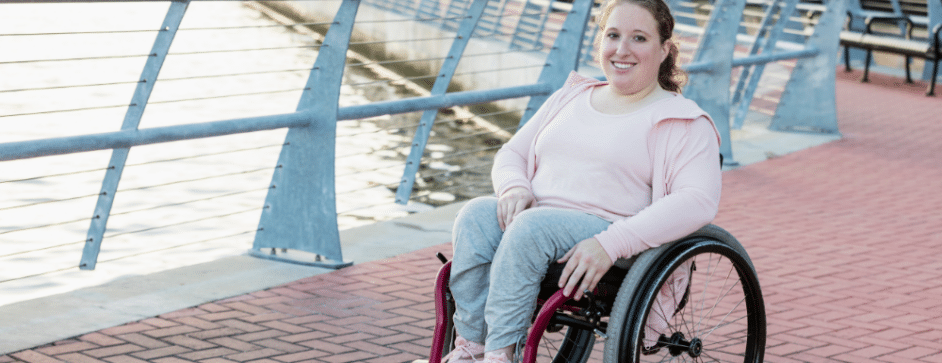The Power of Accessibility: A Universal Benefit
February 5, 2024 | Tips and Resources

By Rachel Turniansky
If you spend a bit of time people watching in a public place, chances are you will see a parent pushing a stroller, a youngster on a bicycle, a teen on an electric scooter and a person with a mobility challenge. All these people benefit from a curb cut – that dip in the sidewalk that allows for easy access to a crosswalk. We take things like this for granted, yet there was a time not too long ago that getting around was much harder for people who have limited mobility. Curb cuts were only required by law after the passage of the Americans with Disabilities Act in 1990.
The incidental benefit of curb cuts is a phenomenon known as “universal design” or “inclusive design.” It’s also known, appropriately, as the “Curb Cut Effect” where features of the environment that are created to make life accessible to people with disabilities are used and appreciated by a larger group of people, like the bicyclist, parent with a stroller, and a teen on a scooter.
There are plenty of other accessibility features we see in our daily life that we might or might not realize have a primary purpose of accommodating disabilities, but also make life easier for others.
Captioned videos allow access for people with hearing loss, but they are also helpful for people for whom English is not their first language, as well as those with auditory processing disabilities. Captions are also helpful for people who watch videos in public places or other settings where the audio is not appropriate. Have you ever been scrolling Instagram while standing in line and you don’t have earbuds handy? Captions are an example of the Curb Cut Effect.
Large print materials and signs with easy-to-read fonts help people with vision loss, but they can also be helpful for someone who misplaces their glasses, or someone with a cognitive disability. Single gender bathrooms can meet the needs of caregivers as well as non-binary folks. Displaying page numbers during synagogue services helps everyone stay together during prayers and Torah reading, particularly people with hearing loss who can’t follow the sound of the congregation, but it’s also inclusive for those who are less familiar with the order of a service.
Of course, it’s not always possible for one product or space to meet everyone’s needs. It’s important to project a warm and welcoming attitude so that people who need specific types of accommodation know their participation in our community is a priority. Recognizing that we can learn from people who represent different perspectives and continually evaluating how well individual needs are being met must be foremost in the thoughts of leaders and decision makers.
It’s important when creating spaces that we forget the one-size-fits-all mentality. All humans are unique individuals and that’s what makes the world an amazing place. As much as you may love yellow tulips, imagine if that was the only flower that existed. I’d much rather visit a park filled with bursts of colors, shapes, scents, and textures.
In the diverse garden that is the Jewish community, fostering inclusion and accessibility is vital. Accessibility isn’t just about ramps and captions; it can be a crucial component of creating a community that is welcoming and inclusive.
By keeping in mind people of different abilities and needs, we also acknowledge that there are times when we all could use a little help. Universal design makes spaces accessible on a practical level and organizations that prioritize inclusive practices sends a message that everyone counts and everyone is valued.
Pirkei Avot: Ethics of our Ancestors 2:5 says: “Do not separate yourself from the community.” This includes those who are separated against their will or control. Even though religious institutions are legally exempt from following the ADA, the moral obligation to create inclusive spaces far surpasses federal law.